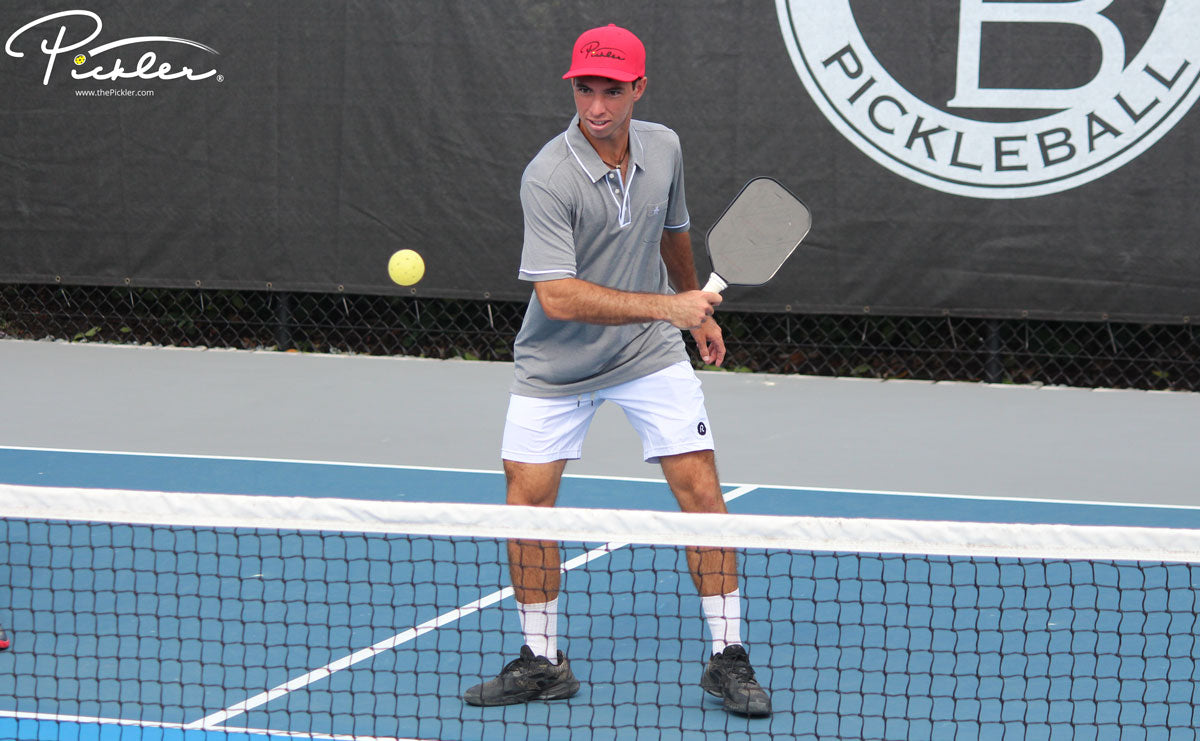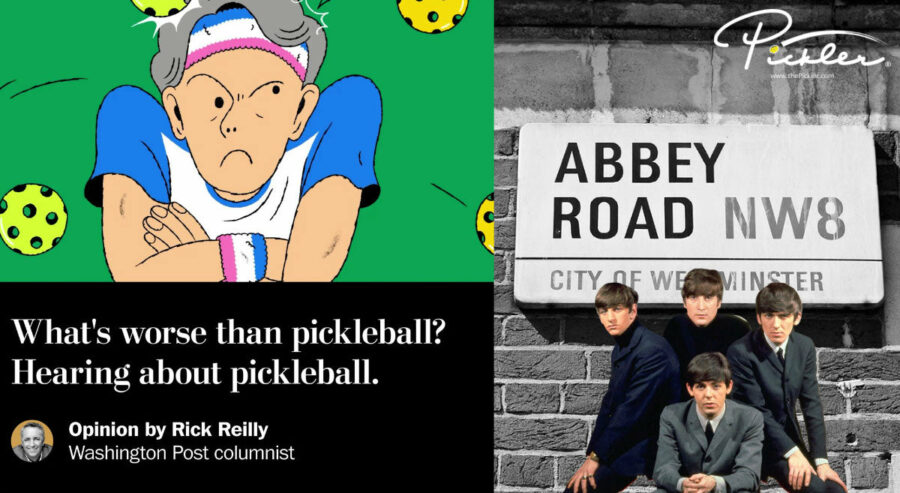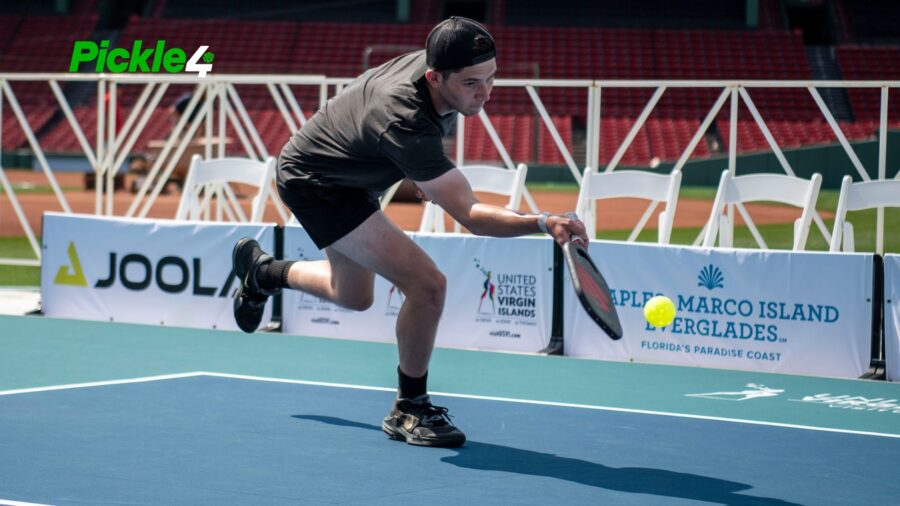A volley is where you hit the pickleball out of the air without the pickleball bouncing. Most volleys are hit when you are at the Non-Volley Zone Line.
There are a handful of volleys that you can hit on the pickleball court, which include (1) a block volley; and (2) a punch or swing volley. A block volley is more of a defensive shot where you may be caught off guard by your opponents and are trying to reset the pickleball softly into the Kitchen. A punch or swing volley is more of an offensive shot where you are playing aggressive and attacking your opponents.
In any volley scenario on the pickleball court, there are a handful of keys to success, which include:
- Athletic and Balanced Stance
- Loose Grip Pressure
- Open Paddle Face
- Solid Contact Out in Front of Your Body
- Controlled Follow-Through
Keep Steady in an Athletic and Balanced Stance
To hit a volley, start in an athletic position, where you are compressed (i.e., your knees are bent and your weight is on the balls of your feet) with your paddle out in front of you. You should maintain balance throughout the entire volley, including the follow-through. Avoid lunging or leaning too far in any direction that could compromise your balance and stability.
Use a Loose Pickleball Paddle Grip
Be sure that you have a relatively loose paddle grip. If your grip is too tight, you will likely hit the pickleball too hard and not in the direction that you want the pickleball to travel in. Volleys are all about touch and feel.
Keep the Face of Your Pickleball Paddle Open
At the point of contact, pay attention to the angle of your paddle face. Your paddle angle will dictate where the pickleball will go.
The correct paddle angle when hitting a volley in pickleball is to keep the face of the paddle open or slightly tilted upward. This means the paddle should be angled upward toward the sky at a slight angle. This helps to control the trajectory and direction of the volley. An open paddle face will create some backspin on the pickleball, while still allowing you to keep the pickleball low over the net. So, when you are at the pickleball net and preparing for a volley, position your paddle in front of you with the face angled upward.
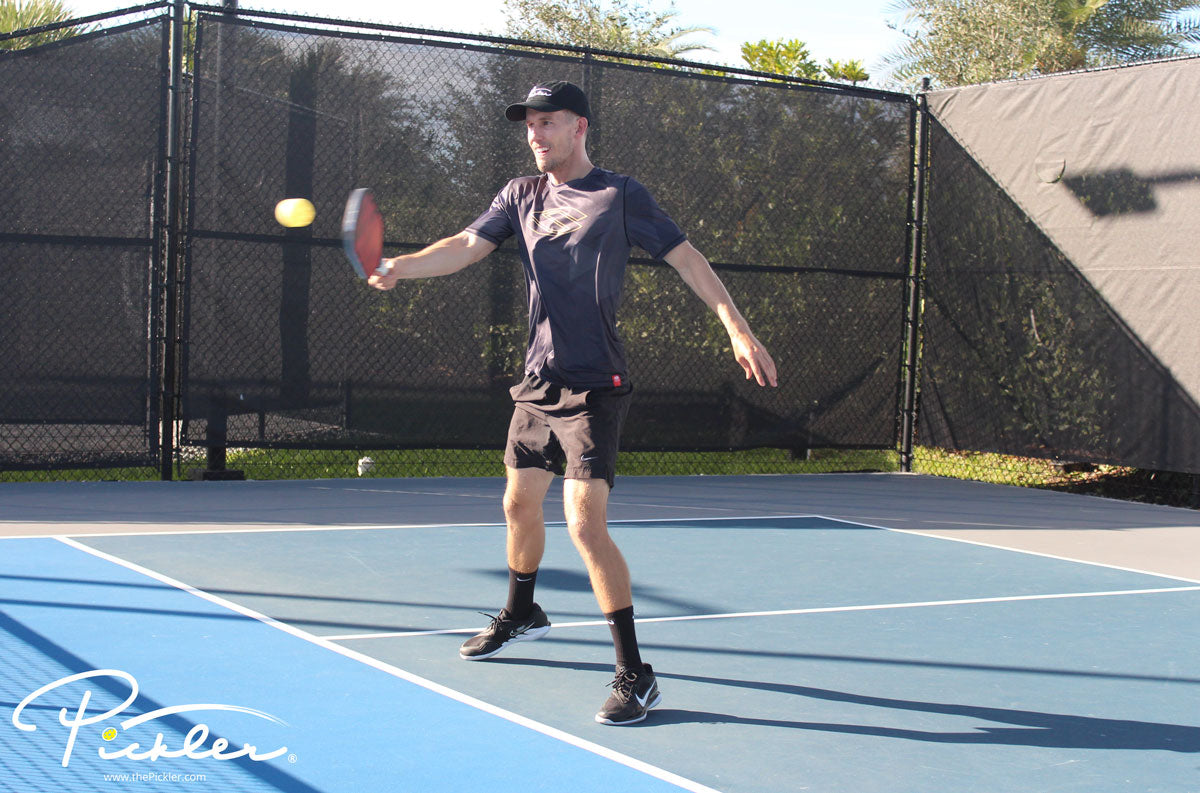
Also, to note, the angle of your pickleball paddle face may vary slightly depending on the type of volley that you are attempting. For a soft drop volley, you might keep the paddle face more open to gently guide the ball over the net. On the other hand, for a punch volley with more power, the paddle face may be angled slightly less open.
Make Solid Contact with the Pickleball Out in Front of Your Body
Aim to make clean and solid contact with the pickleball using your pickleball paddle’s sweet spot (which is generally in the middle of your pickleball paddle (but slightly toward the head of the paddle), although this can vary from paddle to paddle). Make contact with your paddle out in front of your body with your arm slightly bent (in other words, not overextended with a straight arm, as you can lose your ability to generate power and control the pickleball).
Control Your Follow-Through on the Volley on the Pickleball Court
After making contact with the pickleball, maintain a controlled and compact follow-through. Your follow-through should be smooth and controlled rather than overly aggressive or excessive. This helps with balance, stability, and maintaining control after the shot.
Also, direct your follow-through on your pickleball volley toward your intended target or the spot on the court where you want the pickleball to go. This helps with accuracy and ensures that your body and paddle are aligned with the desired direction of the volley.
To note, if you are executing a block volley, then you will absorb the pickleball with steady hands and your loose paddle grip. Your follow-through will not include any punch or forward motion. However, if you have time, go on the offensive and hit a more aggressive volley with a punch or swing. Generate short, compact, forward momentum through the pickleball.
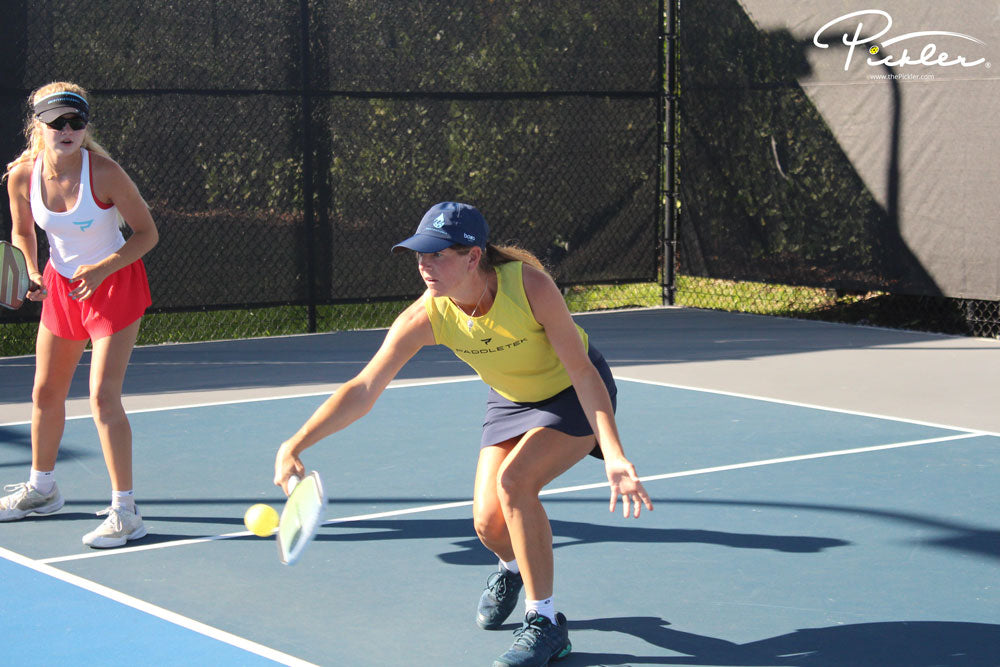
Master These Keys to Hitting a Volley on the Pickleball Court
It is crucial to practice these elements of a perfect volley consistently to develop muscle memory and improve your technique. With time and repetition, you will be able to hit the perfect volley on the pickleball court with greater consistency, control, and accuracy.
